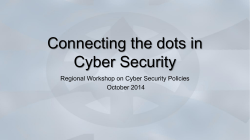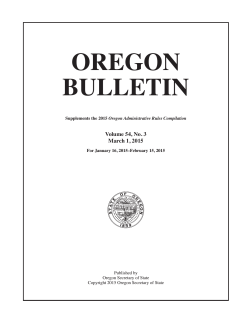
Creating a University CERT: CERT OSIRIS
Creating a University CERT: CERT OSIRIS Jean BENOIT & Guilhem BORGHESI, University of Strasbourg / RENATER Campus Best Practice Summary • University of Strasbourg • CERT OSIRIS : how it all started • Services currently operated • Tools • Key achievements • What's next ? • Conclusion 25/03/2015 2 University of Strasbourg • 4 centuries of existence (founded 1621) • 45 000 students • 6 000 professors, researchers and technical staff • 38 faculties, 77 research groups and 3 active Nobel Price recipients • IT staff : over 100 people 25/03/2015 3 CERT OSIRIS : how it all started • Why a CERT ? • Context: organizational complexity • Different structures (faculty, labs etc..) intertwined • Each structure is controlled and financed by at least 2 actors: • University for the teaching part • A research agency (CNRS, INSERM etc.) for the research part • Each structure appoints a security contact, often the same person • Merging of 3 universities (2009) • Most labs make heavy use of the services provided by the university IT department (network access, email, applications etc.) • A willingness to work together: • Security expertise is a scarce resource • Co-ordinated effort → efficient use of these resources • Goal : increase the global level of IT security 25/03/2015 4 CERT OSIRIS: how it all started • Project start: 2011/02 • Approved by management and partners • First deployment of tools (incident handling, mailing lists etc.) • Official start: 2012/01/01 • Organization selected • Informal structure of 8 security experts • Co-lead by the CISOs of CNRS and University 25/03/2015 5 Before the CERT OSIRIS... 25/03/2015 6 … and NOW 25/03/2015 7 CERT Services • Security incident handling • Network monitoring, intrusion detection • Incident handed over to the local security correspondent • Blocking to prevent further impacts : address filtering on the backbone, account locking • Incident tracking, providing help to the security correspondent • Coordination between partners (police, justice, security chain) • Training • Training programs for users and administrators • Awareness programs 25/03/2015 8 CERT Services • Providing security information • Relaying security vulnerability and alerts (issued by national CERTs) • Monitoring legal developments • Supporting Information Security Management Systems deployment • Upon request by any lab or faculty • Forensics • Proof collection • Log analysis 25/03/2015 9 Tools (1/2) • Unified network of security correspondent • Incident tracking (Request Tracker) • Common tool also used IT department • Better coordination • Communication • Single contact : cert-osiris@unistra.fr • Website : http://cert-osiris.unistra.fr • Phone: through IT Department support line 25/03/2015 10 Tools (2/2) • Compromised account monitoring • fixed rate of sent e-mails per hour per login • Automation • Tool-chain to create security incident including all relevant informations: network, contact etc. • Reminders (when correspondent won’t answer) • Blocking • IP address • User login • Domain names (RPZ) 25/03/2015 Host compromission Compromised account Phishings URL 11 Missing tools • Netflow: project starting in april • Browser tests • Network scanner: provided by RENATER 25/03/2015 12 Key achievements • Building anew the security correspondent network • Formalization of the security incidents handling process • Poor user passwords finding • Password same as login (350) • Password too short (160) • Password too simple (14.000 accounts which makes 12 %) • Training and awareness programs • Training « Internet without scare» (100) • Awareness campaign for security correspondents (700) 25/03/2015 13 What's next ? • Extend the CERT to include other Higher-Education institutions in the Alsace region • More training programs • Webdoc to raise security awarness amongs students • Improve tools 25/03/2015 14 Conclusion • Increased security posture and awareness • our users, our management, our partners and our correspondents • A clearer and more consistent message • to CNRS and University users alike • Few financial/human resources needed through a more efficient use of them • Just a informal structure of people willing work together on IT Security ! • Campus Best Practice document: « creating a university CERT » to be released soon in english 25/03/2015 15
© Copyright 2025

















